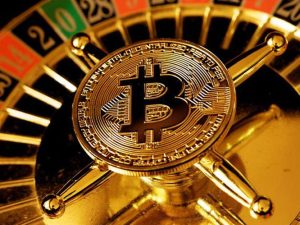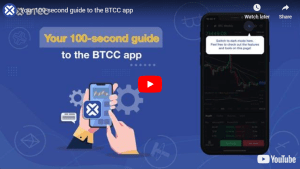Silver Price Analysis & Forecast 2025: Is it a Good Time to Buy Silver Now?
As a precious metal, silver has the same investment value as gold. gold has seen rapid price rally in this year. Benefiting from gold’s excellent performance, silver also followed this exciting trend and continue to stretch. Under such a bullish background, some investors may be wondering whether silver also is a good investment as a precious metal, and is it appropriate time to buy silver now?
In this article, we will analyze the historical price of silver, combined with the current actual situation, to make predictions about the future trend of silver in 2025. We will analyze silver in detail.

BTCC now supports Tokenized Silver Futures trading with a leverage up to 150Χ, users who are interested in gold trading currently can use USDT to trade silver commodity on BTCC without opening an account with other traditional exchanges. Click the button below to buy silver⇓
[TRADE_PLUGIN]SILVERUSDT,SILVERUSDT[/TRADE_PLUGIN]
\Deposit and Receive Up to 10,055 USDT!/
Table of Contents
-
- Latest News & Updates on Silver
- Silver vs. Gold
- Benefits of Investing in Silver
- Silver Historical Price Analysis
- Which Factors Influence Silver Prices?
- Silver Price Prediction 2025
- Silver Future Outlook
- How to Invest in Silver?
- How to Trade Tokenized SILVERUSDT Futures on BTCC?
- Conclusion
- FAQs About Silver
\Deposit and Receive Up to 10,055 USDT!/
Latest News & Updates on Silver
Gold and silver often move in tandem, driven by demand for safe-haven assets that are free from counterparty risk—especially during times of geopolitical uncertainty. Over the past 12 months, gold has surged 42%, buoyed by an intensifying U.S.-led tariff war and sustained central bank buying. Silver, while gaining around 20%, has underperformed in comparison.
In 2025, silver has experienced a strong rally, recently reaching its highest level in 13 years following a key technical breakout. Investors are expanding their interest in precious metals beyond gold, seeking additional hedges amid global instability. Year-to-date, silver has climbed over 20%, though it still trails gold’s momentum.
Economic data released Wednesday added further support to the precious metals narrative. U.S. services activity showed signs of contraction and job growth slowed, prompting a drop in Treasury yields. Market expectations now reflect two potential Federal Reserve rate cuts in October and December. Since gold and silver do not offer yield, lower interest rates tend to enhance their appeal.
Beyond its monetary role, silver also has strong industrial demand, particularly in sectors like solar energy. According to the Silver Institute, global silver supply in 2024 was about 15% below demand, with another deficit projected for 2025.
As of 4:32 p.m. in New York, spot silver rose 3.3% to $35.65 per ounce. Meanwhile, the Bloomberg Dollar Spot Index remained flat. Gold declined 0.5%, while platinum and palladium posted gains.
BTCC now supports Tokenized Silver Futures trading with a leverage up to 150Χ, users who are interested in gold trading currently can use USDT to trade silver commodity on BTCC without opening an account with other traditional exchanges. Click the button below to buy silver⇓
[TRADE_PLUGIN]SILVERUSDT,SILVERUSDT[/TRADE_PLUGIN]
Silver vs. Gold
Precious metals such as silver and gold have long been regarded as an alternative to traditional investments such as stocks and bonds. Although silver is not as eye-catching as gold, it is considered one of the most valuable metals in the world and one of the most traded commodities.
Compared to gold, silver has a wider application value and a higher commercial position. In addition, some of silver’s unique characteristics mean that its industrial uses are greater than those of gold. Less than 10% of the gold mined is used in industry, while more than 50% of silver is used for industrial purposes. The close connection with industry means that demand for silver is often correlated with industrial demand. Therefore, this means that silver prices can be linked to overall economic output.
Silver is often used by buyers as a way to diversify their commodity holdings and portfolios. There are many methods to invest in silver, including buying and storing the physical metal yourself, as well as buying and investing in silver futures and funds. Another option is to own shares in companies involved in silver mining and production.
[TRADE_PLUGIN]SILVERUSDT,SILVERUSDT[/TRADE_PLUGIN]
Benefits of Investing in Silver
Silver’s advantages as an investment option depend on the role it plays in investment portfolio.
As a independent investment, silver’s performance over the past five years has been roughly similar to that of the blue-chip S&P 500 index. However, because supply and demand in the silver market can be volatile, its price movements do not always follow the movements of the overall economy.
Some investors hold silver for the purpose of stock diversification. Besides, many of the reasons for investing in silver are similar to those for investing in gold. Because of silver’s inherent scarcity and the demand for silver in applications such as electronics, the precious metal is likely to maintain its value even in economic conditions such as recessions, where stocks and other investments suffer huge losses.
In addition, the silver market is highly liquid and the market range is often large, which provides investors with an opportunity to earn high profits. However, investing in silver also carries risks, which means that adequate research and risk assessment should be conducted before investing.
In a word, the silver market is a market full of opportunities and risks. Investors can participate through the foreign exchange market and other investment channels. It is important that investors should obsess adequate knowledge and skills to manage risks appropriately.
Click the following button to buy silver ⇓
[TRADE_PLUGIN]SILVERUSDT,SILVERUSDT[/TRADE_PLUGIN]
\Deposit and Receive Up to 10,055 USDT!/
Silver Historical Price Analysis
Silver has a long history. For centuries, silver, like gold, was considered a reliable method of storing wealth. This metal has been used as a medium of exchange in many societies and still enjoys the same reputation for reliability today.
Although past performance is not necessarily indicative of future results, looking at silver price history may provide useful information. In addition, looking at silver’s historical price data may also help investors identify support areas that could become reliable buying opportunities.
Next, we’ll look at a five-decade history of silver prices.
From the early 1960s to 2021, silver experienced multiple rounds of bull and bear market changes. Although the price of silver denominated in US dollars showed different development characteristics and trends in different historical periods, overall, silver prices followed the price of gold in nearly half a century, showing an upward trend. Besides, because of its own industrial attributes, silver prices also performed their own unique market trends.
Since 1960, the silver market as a whole has been divided into seven stages.
Stage One: 1960 to 1971
From 1960 to 1971, the price of gold was almost fixed. While the price of silver was not fixed, but because it followed the trend of gold prices, it fluctuated slightly at a low level.
In the mid-to-late 1960s, the U.S. government began to aggressively reduce its silver holdings. In 1971, the U.S. government’s silver stocks had fallen from a high of 65,000 tons in 1959 to just 5,300 tons. In 1965, the total supply of silver in the United States reached 23,000 tons, of which 12,400 tons came from the United States Treasury, which subsequently withdrew from the silver market, resulting in gradual decline in the total supply of silver.
The silver market was oversupplied and prices remained low, bottoming out at $1.27 an ounce in the early 1970s.
Stage Two: 1973 to 1980 ( first round of bull market)
During the first round of the bull market from 1973 to 1980, after the breakup of the Bretton Woods system, the policy factors that suppressed the price of gold finally subsided, upward momentum for silver price broke out. Under the comprehensive impact of factors such as the overissuance of US dollars, inflation, political turmoil, oil crisis and gold production being stagnated, the international gold price continued to rise from 42 US dollars/ounce. The silver price closely followed the gold price trend, and at that time, the silver market was in a serious state of short supply.
Hunter brothers in the United States believed that the silver market was profitable, thus beginning to buy a large number of silver futures, option contracts and hoard silver spot and control the price of silver. By the end of 1979, they controlled 53% of silver deposits on the New York Mercantile Exchange and 69% of silver deposits on the Chicago Mercantile Exchange, owing 120 million ounces of spot silver and 50 million ounces of silver futures. Under the influence of the manipulation, the silver price in London has risen sharply to an all-time high of $49.45 an ounce.
The crazy speculation caused the market supply and demand of silver to be decoupled with the actual production and consumption, and the market price seriously deviated from its value.
Stage Three: 1980 to 1983
From 1980 to 1983, the Hunt brothers’ capital chain broke, resulting in the price fall of of silver.
From 1979 and 1980, at the urging of the Commodity Futures Trading Commission, the New York Mercantile Exchange took measures in the silver futures market, which included raising margin, imposing position limits, and allowing only closing trades. The result is a reduction in short interest and forcing short sellers to either exit the market or take positions into the spot market.
The average price of silver in London in 1982 has fallen back to $7.92 per ounce. Silver began to rebound in 1983, but the annual average price was only $11.43 /ounce.
Stage Four: 1984 to 2000 ( first round of bear market)
During the first round of bear market from 1984 to 2000, the gold and silver markets collapsed. After the gold price hit a new high of 850 US dollars/ounce in 1980, by 1999, the gold price has fallen to 251.9 US dollars/ounce, a decline of 70.36%. The confidence for the gold market was greatly damaged.
Factors at the root of the 20-year bear market in gold prices include interest rate increase by the Fed, the strength of the US dollar, Saudi Arabia’s production increase and the collapse of oil prices, the collapse of the Soviet Union, the gold sell-off, economic stability and the bull market in the US stock market, etc. After the silver market returned to rationality, it also followed gold trend into a bear market of nearly 20 years.
During the period, silver prices as a whole remained in the range of $4 per ounce to $6 per ounce, during which the annual average price even fell below $4 per ounce to $3.95 per ounce.
Stage Five: 2000 to 2012 ( second round of bull market)
At this stage, the Internet economic bubble burst, terrorism rose, geopolitical conflicts such as the Middle East occurred frequently, the subprime mortgage crisis triggered the international financial crisis, the Federal Reserve slashed interest rates and implemented multiple rounds of quantitative easing policies, the rapid development of gold ETF (exchange-traded fund) increased the demand for gold investment, and the gold price continued to rise, once rising to a high of 1920 dollars/ounce, representing a seven-fold increase in 12 years.
This stage can be divided into two smaller stages, namely during 2000 to 2008, the gold bull market before the outbreak of the international financial crisis, and during 2008-2012, the gold bull market after the outbreak of the international financial crisis, which is also the largest bull market since the 20th century. Affected by this, silver prices entered the second round of bull market, silver price in London rose from around $5 / ounce to the highest near $48.7 / ounce.
Stage Six: 2012 to 2018 ( second round of bear market)
After the international gold price hit a record high of 1920 US dollars/ounce, it continued to fall sharply, and the decline was rare in 30 years, and the voice of the bear market of gold and silver appeared frequently.
This round of decline is a technical adjustment caused by investors’ preference for stocks and gold ETFs constant position reduction. International investment banks continuing to lower gold price expectations and the withdrawal of speculative funds has also played a role in promoting silver fall; The fundamental reason is that the Federal Reserve began to exit quantitative easing policy and began to raise interest rates, causing panic selling in the gold market.
In addition to the above influencing factors, the weak economy dragged down the demand for silver, and the price of silver fell more than the price of gold. The price of silver fell to the lowest near $13.6 / ounce.
Stage Seven: 2019 to 2024 ( third round of bull market)
During the third round of bull market since 2019, quantitative easing combined with the impact of the epidemic promote the emerge of the new bull market, and the silver price has risen with the gold price.
The weakening of the US economy and the overall easing of monetary policy by the Federal Reserve have all been positive for gold and silver prices, and gold and silver prices have begun to strengthen.
The price of silver, despite dragged down by the COVID-19 and economic stagnation, once fell to a new low of $12 per ounce since 2010, but then began to strengthen and once approached $30 per ounce. In 2021, the expected turn of the Federal Reserve’s monetary policy and the epidemic repeatedly became the core impact logic of the silver price trend, while the US Treasury yield and the US dollar index were the core drivers. Silver prices dropped amid volatility from a high of $30 an ounce to a low of $21.40.
In 2024, silver prices surpassed a decade-long price ceiling, exceeding $30 per ounce and capturing the attention of investors globally. Investors can monitor these trends through live price charts for both gold and silver.
The metal’s remarkable rally of 40% by October—outpacing even gold’s strong performance—propelled prices to $35 before stabilizing around $32 in mid-December.
This significant advance is attributed to a confluence of factors: robust industrial demand, a second consecutive year of substantial supply deficits, rapidly declining inventories, and renewed safe-haven buying driven by inflation concerns and geopolitical tensions.
Stage Eight: 2025 until now
Silver has been a high-performing asset in 2025 and is now up more than 20% year to date. That is still lagging the move in gold, however, which has jumped about 28%. The price of gold was down slightly on June 5, meaning silver’s rally closed some of the gap between the two.
Silver has industrial uses, including in solar panels, and is also seen by some investors as a defensive precious metal, similar to gold. A recent survey from the Silver Institute estimated that the supply of silver was about 15% lower than demand in 2024 and projected another deficit in 2025.
[TRADE_PLUGIN]SILVERUSDT,SILVERUSDT[/TRADE_PLUGIN]
Which Factors Influence Silver Prices?
Knowing the past price movement of silver, as silver trading investors, we also need to know what economic factors will affect the price of silver.
There are many factors impacting the price movement trend of silver, including :
- Supply and Demand Dynamics
- Political and Geopolitical Factors
- Investment Demand
- Risk Aversion Sentiment
- Inflation
- Environmental and Social Considerations
\Deposit and Receive Up to 10,055 USDT!/
Silver Price Prediction 2025
Top financial institutions allocate significant resources to analyzing the precious metals market, with silver receiving increasing attention due to its dual role as both an industrial and investment asset.
Their silver price forecasts are informed by a combination of macroeconomic trends, technical analysis, and detailed supply-demand modeling. These insights often shape the strategies of institutional investors, hedge funds, and even central banks with exposure to commodities.
However, despite the depth of research behind these projections, investors should remain aware that real-world market behavior can diverge from even the most sophisticated models due to unforeseen geopolitical, economic, or technological developments.
Here is a Summary for Silver Price Predictions for 2025
| Analyst/Firm | Silver Price Target | Time Frame |
|---|---|---|
| Citigroup | $40 | 2025 |
| JP Morgan | $38 | 2025 |
| Saxo Bank | $40 | 2025 |
| World Bank | 7% rise | 2025 |
| PricePrediction.net | $38.87 | End of 2025 |
| Alan Hibbard | $40 | 2025 |
| Alan Hibbard | $52.50 | 2026 |
| InvestingHaven | $48.20 – $50.25 | 2025 |
| InvestingHaven | $75 | 2027 |
| InvestingHaven | Peak price: $80 | 2030 |
Click the following bottom to buy silver ⇓
[TRADE_PLUGIN]SILVERUSDT,SILVERUSDT[/TRADE_PLUGIN]
Silver Future Outlook
The outlook for silver in 2025 remains broadly bullish, with many analysts projecting strong upside potential. This optimism is driven by a convergence of factors—most notably rising industrial demand, particularly from green technologies like solar energy and electric vehicles, alongside potential supply limitations from key mining regions.
While expert forecasts provide useful guidance, silver’s unique position as both an industrial commodity and a store of value means it is highly sensitive to a wide range of market forces. As such, investors should remain agile and responsive to shifting global conditions.
Key factors to monitor include:
-
Industrial demand growth, especially from renewable energy and EV sectors
-
Central bank policy shifts, which can influence interest rates and currency strength
-
Global political and economic developments, particularly those affecting market stability
-
Fluctuations in silver production, especially in major mining regions like Mexico, Peru, and China
\Deposit and Receive Up to 10,055 USDT!/
How to Invest in Silver?
There are a variety of options for investors to invest in silver, thus tap its potential. Each approach has its own advantages and caveats. Here are some of the most common ways to invest in silver:
- Buy physical silver: this usually involves buying silver coins or bars from a reputable dealer. However, this also involves possible storage costs or security risks. Overall, this is a recommended way to invest because you can’t beat the comfort of owning tangible assets.
- Buy silver ETFs: exchange-traded funds (ETFs) that track silver prices offer a convenient way to gain exposure to the metal’s price.
- Buy silver mining stocks: buying shares of companies engaging in silver exploration, production, or processing can give investors leverage to influence the price of silver.
- Buy silver futures or options: these contracts give investors the right or obligation to buy or sell silver at a specified price and date in the future.
BTCC now supports Tokenized Silver Futures trading with a leverage up to 150Χ, users who are interested in gold trading currently can use USDT to trade silver commodity on BTCC without opening an account with other traditional exchanges. Click the button below to buy silver⇓
[TRADE_PLUGIN]SILVERUSDT,SILVERUSDT[/TRADE_PLUGIN]
\Deposit and Receive Up to 10,055 USDT!/
How to Trade Tokenized SILVERUSDT Futures on BTCC?
BTCC, one of the longest-running crypto exchanges in the world, supports Tokenized Silver Futures trading with a leverage up to 150Χ, users who are interested in silver trading currently can use USDT to trade gold commodity on BTCC without opening an account with other traditional exchanges.
Note: You can deposit and receive up to 10,055 USDT now when you sign up and verify your account on BTCC. Every new user gets a 10 USDT coupon after completing their registration. You will also get an additional 20 USDT coupon on completing your KYC verification.
The following sets forth the detail guidance on how to trade tokenized silver futures on BTCC.
Step 1: Create a BTCC account
Step 2: Complete BTCC’s identity verification
Step 3: Fund your BTCC account
On the BTCC official homepage, choose “Deposite”, and then fund your account with your preferred method

Step 4: Place your tokenized SILVERUSDT futures order
Go back to the BTCC official homepage, choose “Futures” -“USDT-M Perpetual Futures Contract”-“Tokenized Stocks & Commodities”-“SILVERUSDT”.

You can also click the bottou below to directly enter silver futures trading page⇓.
[TRADE_PLUGIN]SILVERUSDT,SILVERUSDT[/TRADE_PLUGIN]
Then, choose the contract trading order type. Futures contract orders on BTCC platform include market orders, limit orders and SL/TP orders.
- Market Order: users place orders at the best price in the current market to achieve fast trading.
- Limit Order: Limit orders are a type of order to buy or sell futures at a price more favourable than the market price. When you buy at a price lower than the market price or sell at a price higher than the market price, the order will be in the form of a limit order.
- SL/TP Order: SL/TP orders are a type of order to buy or sell futures at a price less favourable than the market price. When you buy at a price higher than the market price or sell at a price lower than the market price, the order will be in the form of a SL/TP order.
Next, adjust the leverage multiple and choose the lot size and set the SL/TP price ..
Please keep in mind that operating leverage carries the risk of liquidation. Leverage should be adjusted based on your financial status and risk tolerance.
After setting the basic data information, users can choose to buy (open long) or sell (open short) after entering their ideal price. Traders should remind that the price cannot be higher or lower than the highest buying price or lowest selling price of the platform.
Finally click the buy or sell button, and the tokenized silver futures contract order is completed.
\Deposit and Receive Up to 10,055 USDT!/
Conclusion
Based on current favourable market trend, precious metals may be a good investment option for most investors. Even if silver’s performance remains uncertain in the coming months, it remains a strategic holding for portfolio managers and speculative traders. Therefore, it is highly recommended that investors should add silver to their portfolio to protect net worth from future economic fluctuations.
However, as any investment carries both opportunities and risks, we suggest you to be cautious and well-informed before making any investment decision.
\Deposit and Receive Up to 10,055 USDT!/
FAQs About Silver
Is silver a good investment?
Whether silver is a good investment highly hinges on an investor’s investment objectives, risk tolerance and the specific time considered. For some, silver can be a way to diversify a portfolio that already includes stocks and bonds. Furthermore, it is crucial for investors to acknowledge several key considerations: the varying degrees of accessibility to silver in different forms, its inherent volatility, and the possibility of experiencing extended periods of either negative or stagnant returns.
Can silver be used as a hedge against inflation?
Silver’s effectiveness as a hedge against inflation is mixed and varies by time and location. Some studies indicate that silver does not correlate well with consumer price movements in the U.S. But there has been some correlation in the U.K. market over the long run.
Silver prices tend to follow Gold’s moves. When Gold prices rise, Silver typically follows suit, as their status as safe-haven assets is similar.
\Deposit and Receive Up to 10,055 USDT!/
Why Choose BTCC?
If you want to trade tokenized silver futures, we advise you to start with BTCC, one of the longest-serving exchanges in the world. As a old exchange enjoy good reputation, BTCC is more reliable. Fully licensed and regulated in the U.S., Canada, and Europe, BTCC is a well-known cryptocurrency exchange, boasting an impeccable security track record since its establishment in 2011, with zero reported hacks or breaches. BTCC platform provides a diverse range of trading features, including demo trading, crypto copy trading, spot trading, as well as crypto futures trading with a leverage of up to 500x. If you want to engage in cryptocurrency trading, you can start by signing up for BTCC.

BTCC is among the best and safest platforms for crypto trading. The reasons why we introduce BTCC for you summarize as below:
- Industry-leading security
- High liquidity & volume
- Extremely low fees
- High and rich bonus
- Excellent customer service
\Deposit and Receive Up to 10,055 USDT!/
You May Like:
Understanding KYC In Crypto: How To Complete KYC On BTCC
A Beginner’s Guide: What Is Copy Trading & How To Start Copy Trading On BTCC
Top Free Bitcoin Mining Apps & Cloud Mining Platforms For Effortless BTC Earnings In 2025
Best Binance Alternatives In 2025
Best Crypto Futures Trading Platforms In June 2025
Best Crypto Trading Bots In Canada For June 2025
Best Non KYC Crypto Exchanges In June 2025
Best AI Agent Coins To Buy In 2025
Is China’s Gold Buying Frenzy a Catalyst for Bitcoin’s Next Big Rally?
Fed Gov Cook Hints At Rate Cut: Bitcoin Bullish Rally Is Coming?
Bitcoin Halving Countdown 2024:Something You Need to Know About It
BTCC vs. NDAX: which is a better choice for crypto trading in Canada?
How to Choose Best Crypo Exchanges in Canada
BTCC vs. Bybit vs. eToro:which is the best choice for you?
BTCC vs. Coinbase vs. Crypto.com
Pepe Coin Price Prediction 2024,2025 and 2030
What Is Notgram ($NGT): Everything You Need To Know About It
Particle Network (PARTI) Price Prediction: How High Can PARTI Go Post Binance Listing?
Veronum (VRN) Coin Review & Analysis: Next 100x Gem?
What Is cPen Network (PEN): Can It Be Next PI Coin & cPen Network Mining Guide










